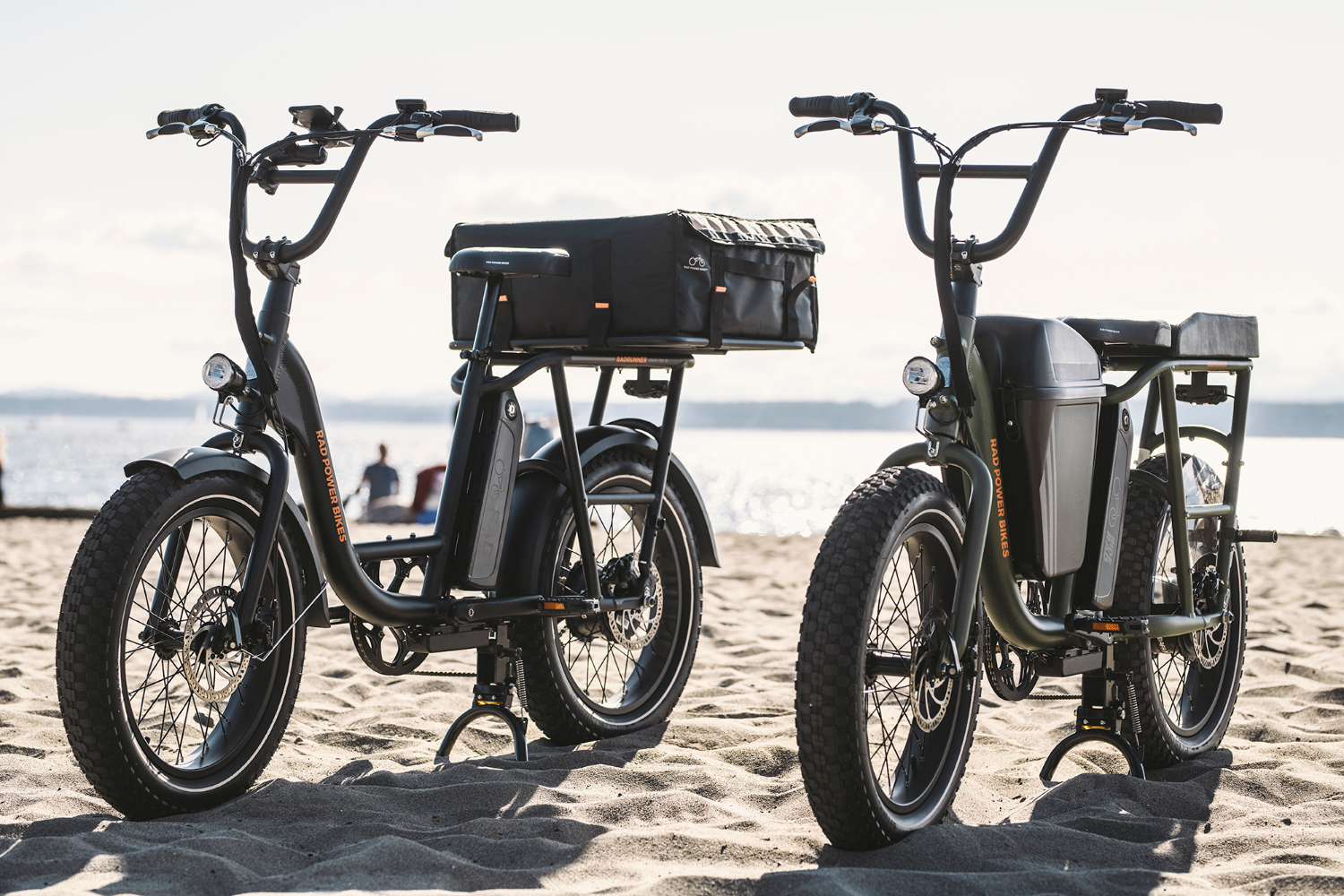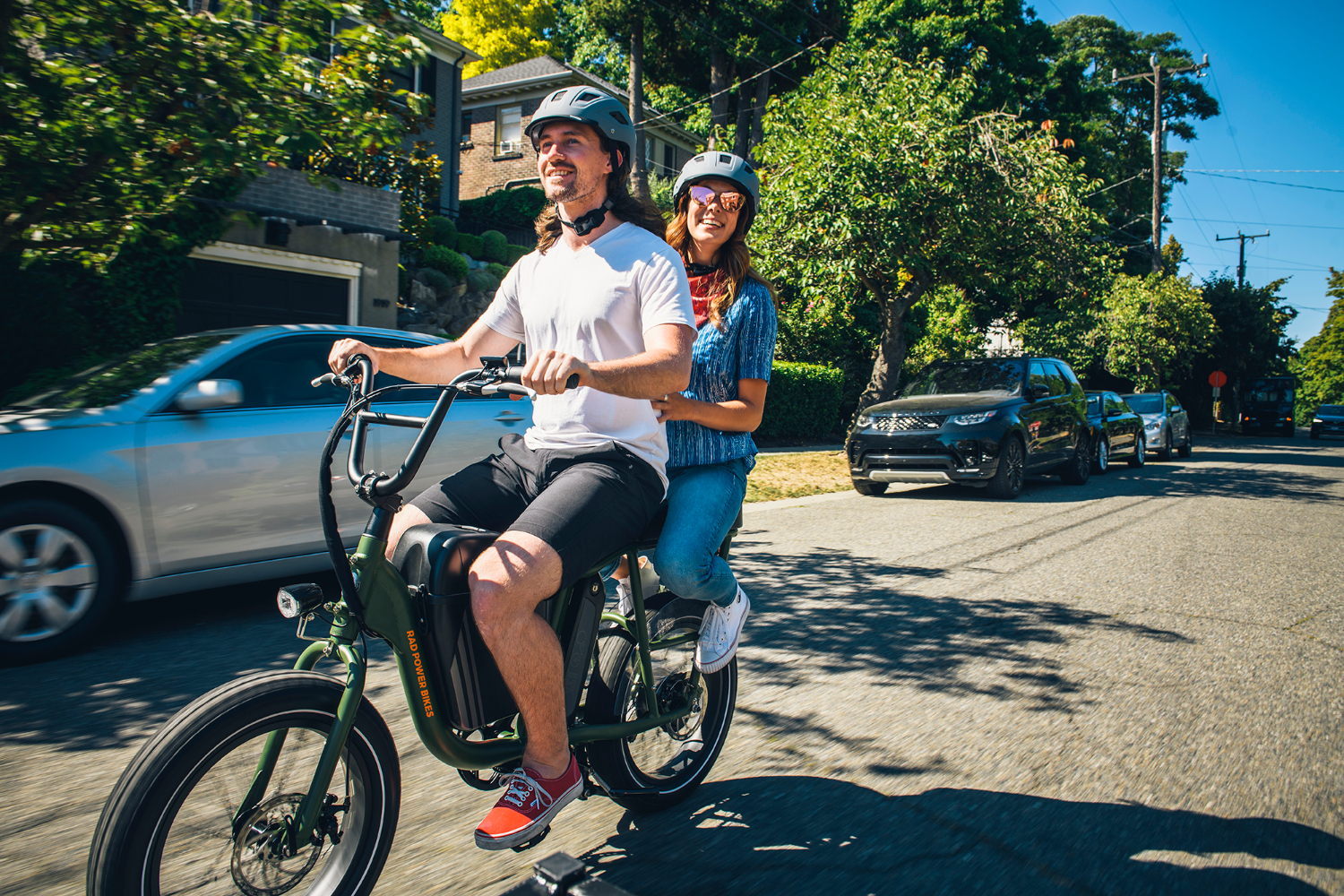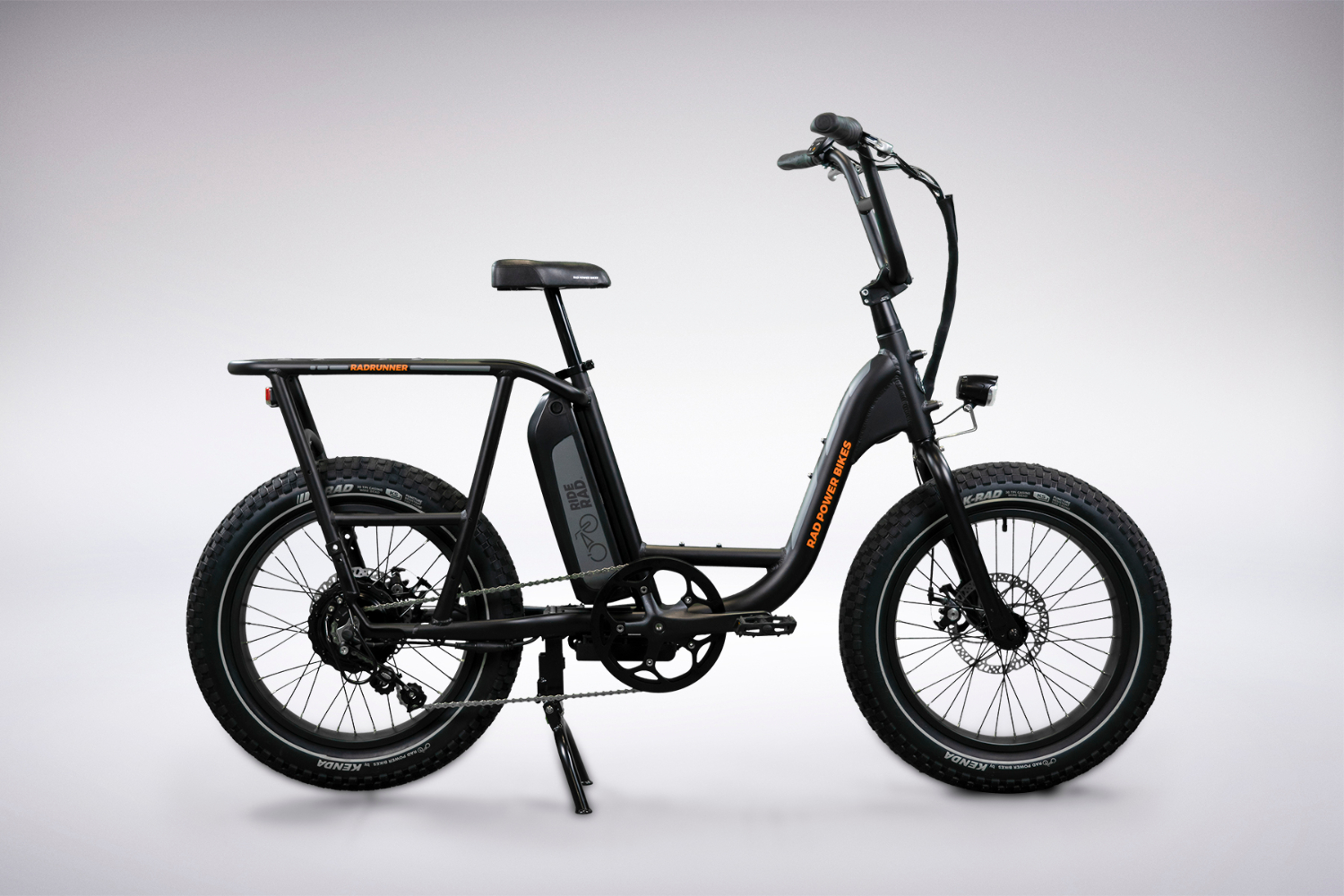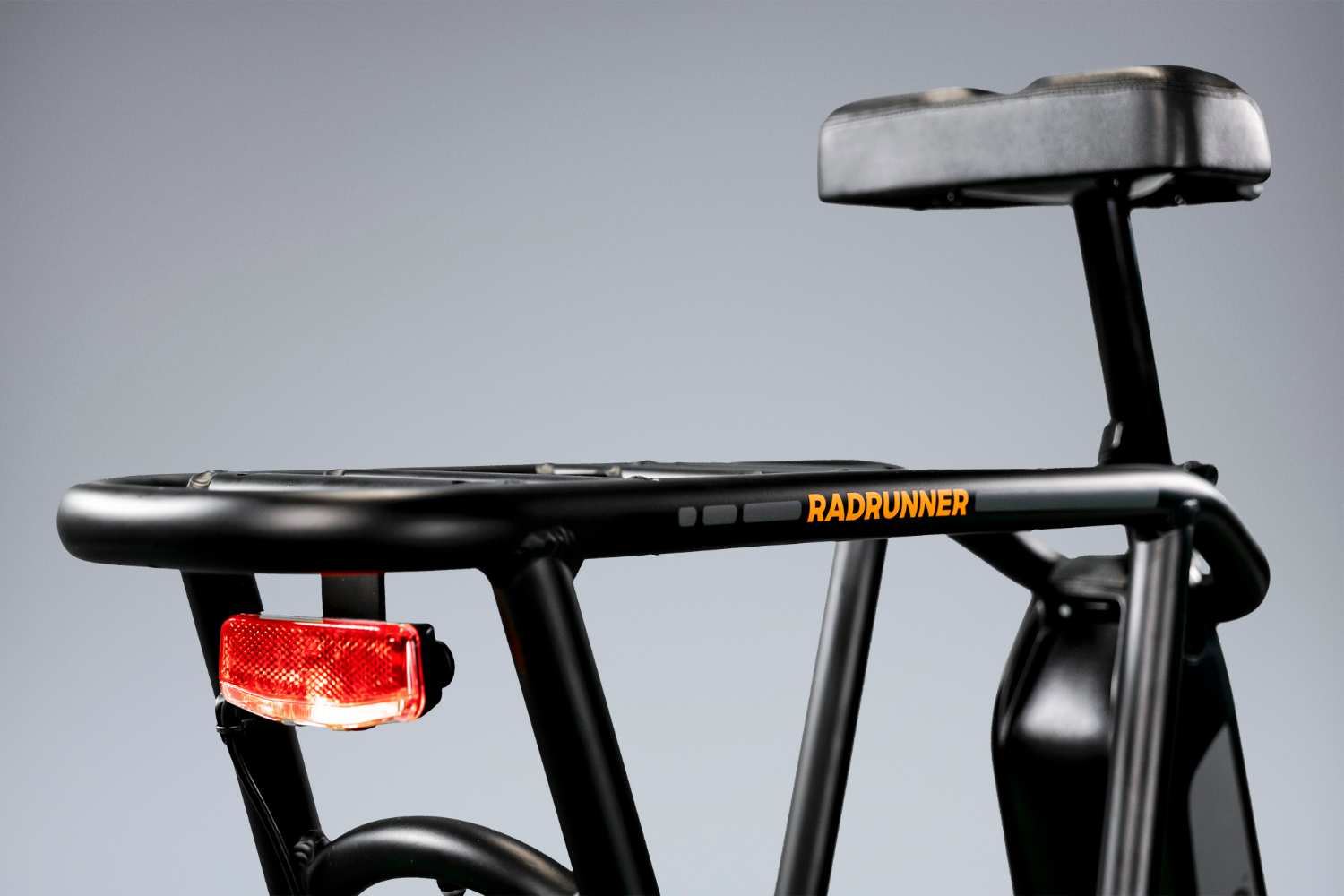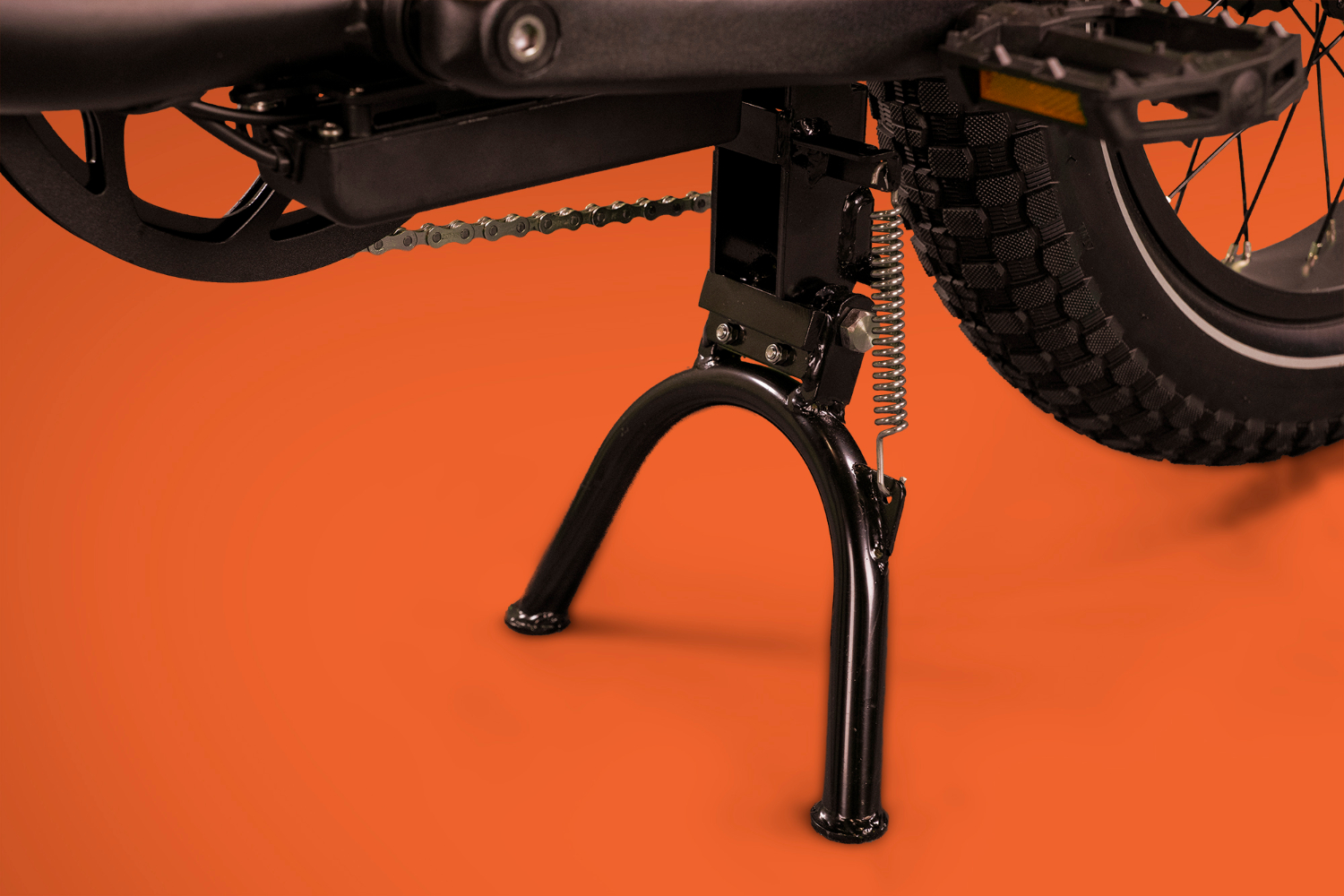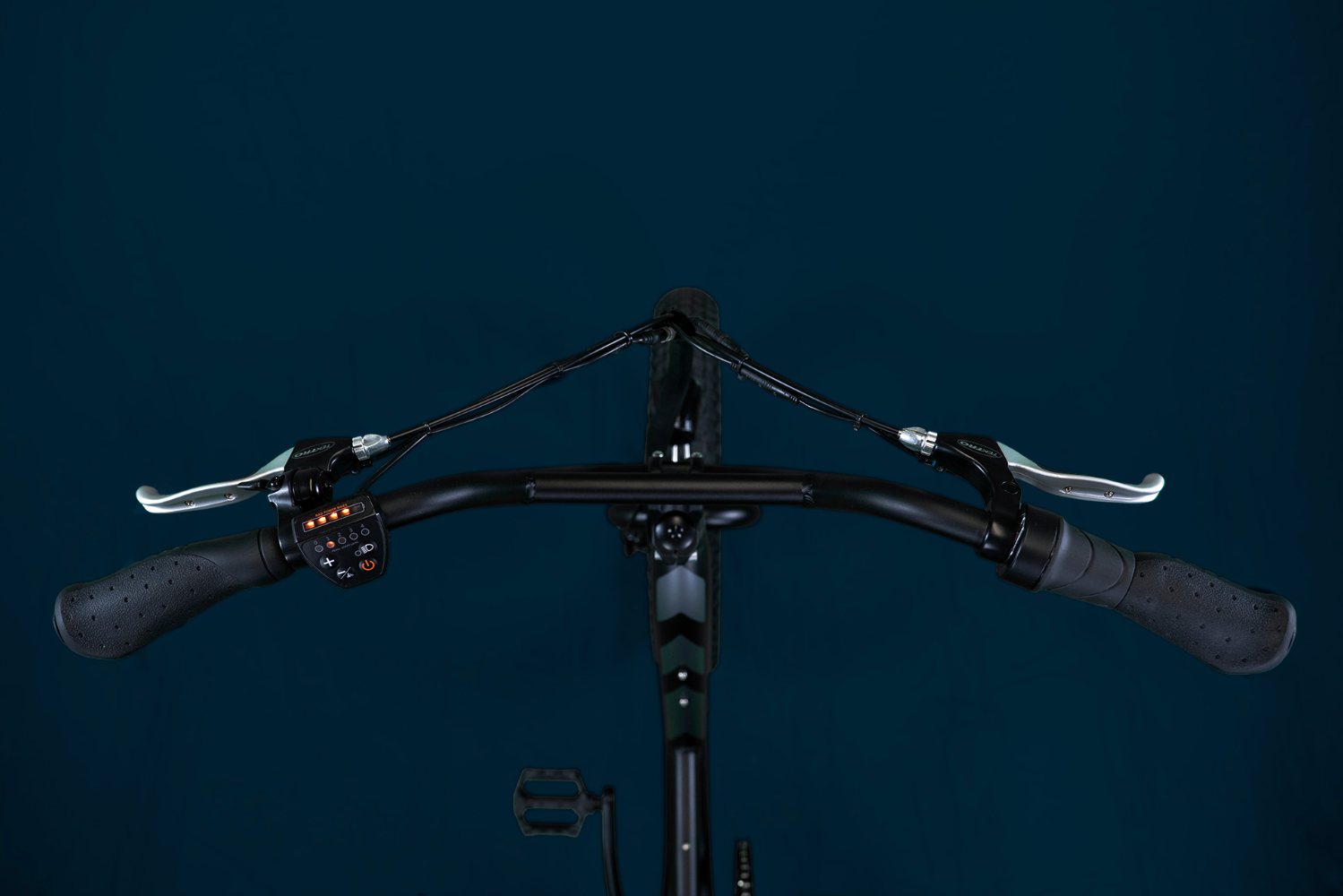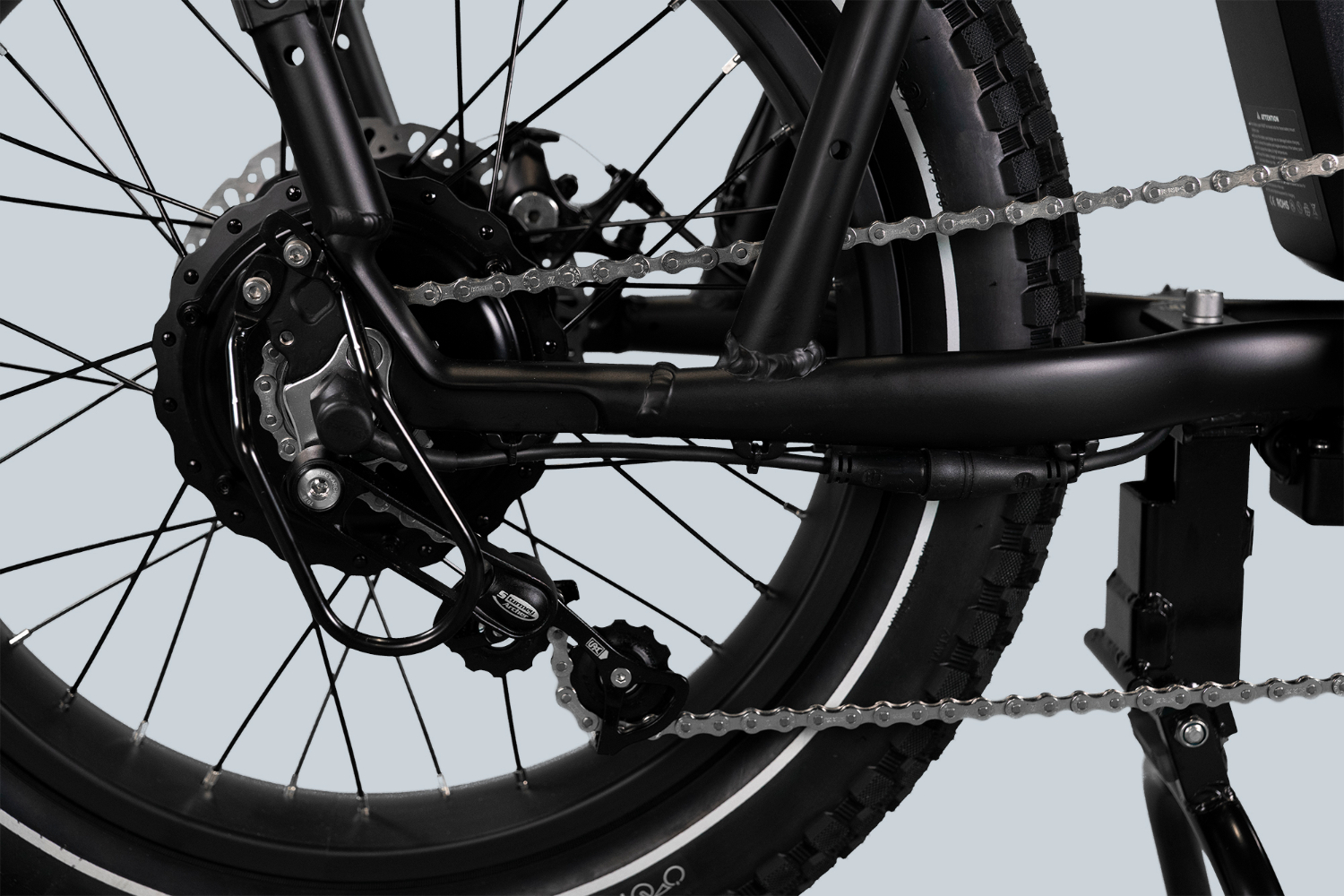Rad Power Bikes has launched a new ebike called the RadRunner in a bid to introduce more people to the practicality and enjoyment of electric bicycles. Rad Power refers to the RadRunner as a combination of a two-seater moped and an electric cargo bike, and describes it as the most adaptable ebike in the company’s 12-year history. At $1,299, the RadRunner is also the least expensive model in a lineup that now includes seven distinct designs.
New ebikes launch on a near-daily basis. The number and types of electric-powered bicycles in the U.S. have exploded this year, following earlier rapid ebike market growth in Europe and Asia. Traditional bicycle companies, motorcycle brands, and automakers are responding to the growing interest in ebikes, joining a quickly growing cadre of pure ebike brands.
With ebikes priced from $500 to nearly $10,000 in a bewildering array of categories, finding the right one can be a confusing process. Knowledgeable buyers can select ebikes designed for performance, urban mobility and commuting, cargo and passenger transport, trail riding, beach cruising, closed-course racing, and more. Most models have fixed frames, but folding ebikes such as the 2019 RadMini and Gocycle GX are easier to transport in car trunks and SUV or RV cargo areas.
Rad Power built the RadRunner to be adaptable for multiple uses. The ebike has a step-through design and can carry a maximum 300-pound load, including passengers and cargo. A standard rear rack holds cargo and passenger seat accessories. The passenger seat is raised for improved visibility. The driver’s seat can be raised to passenger seat level for drivers who want to extend their legs to ride with a more stretched-out, moped-style posture.
The RadRunner carries over many components from the company’s other ebikes. The new model has a 750-watt geared hub electric motor and a 48-volt, 14-Ah Lithium-ion battery with a travel range of 25 to 45 miles per charge, depending on speed, incline, and pedal assistance. Like the other Rad Power models, you can pedal the RadRunner with electric assistance or use a twist grip throttle only with no pedaling. There are four levels of electric pedal assistance. Maximum speed is 20 miles per hour and charging takes 3 to 7 hours.
Unlike the other Rad Power ebikes, which have multiple gears, the RadRunner has a single-speed drivetrain. The simpler drivetrain is easier to maintain and allows new riders to get on and go without needing to figure out how and when to shift. This design decision likely saves money, but it also recognizes that many ebike riders will pedal only incidentally and primarily rely on electric power.
The RadRunner has a rigid front fork instead of a front suspension, but the 20-inch by 3.3-inch-wide Kenda multiterrain air-filled tires should help with both on-road comfort and off-road stability. The tires were custom-designed for the RadRunner and have an extra ply, an inner liner, and a higher load capacity than most bike tires. To be clear, the RadRunner isn’t a trail bike or an off-road bike, but riding on paths, lawns, hard sand beaches, and forest roads should be easy and fun.
The RadRunner has mechanical disc brakes, upright handlebars, a dual-leg kickstand, front and rear lights that run off the bike’s battery, and an LED display. Reflective sidewall striping on the Kenda tires adds to the ebike’s visibility.
Rad Power uses a direct sales model to hold down purchase prices. The RadRunner will be available for $1,299 in the U.S. via the Rad Power website on September 10. Customers in Canada and Europe will be able to buy the RadRunner in late September.
Editors' Recommendations
- Rad Power Bikes’ new e-bike models boost accessibility and visibility
- Spinciti’s Amsterdam e-bike offers speed and range at an affordable price
- Vintage Electric honors Shelby with limited-edition e-bike for Cobra fans

